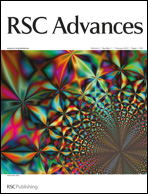New possibilities for soft matter applications: eliminating technically induced thermal stress during FIB processing†
Abstract
Heating effects on focused ion beam processing have been identified as a strong convolution of intrinsic and technically induced contributions via experiments and simulations. The systematic parameter variation reveals that classic serpentine- or raster-like


 Please wait while we load your content...
Please wait while we load your content...